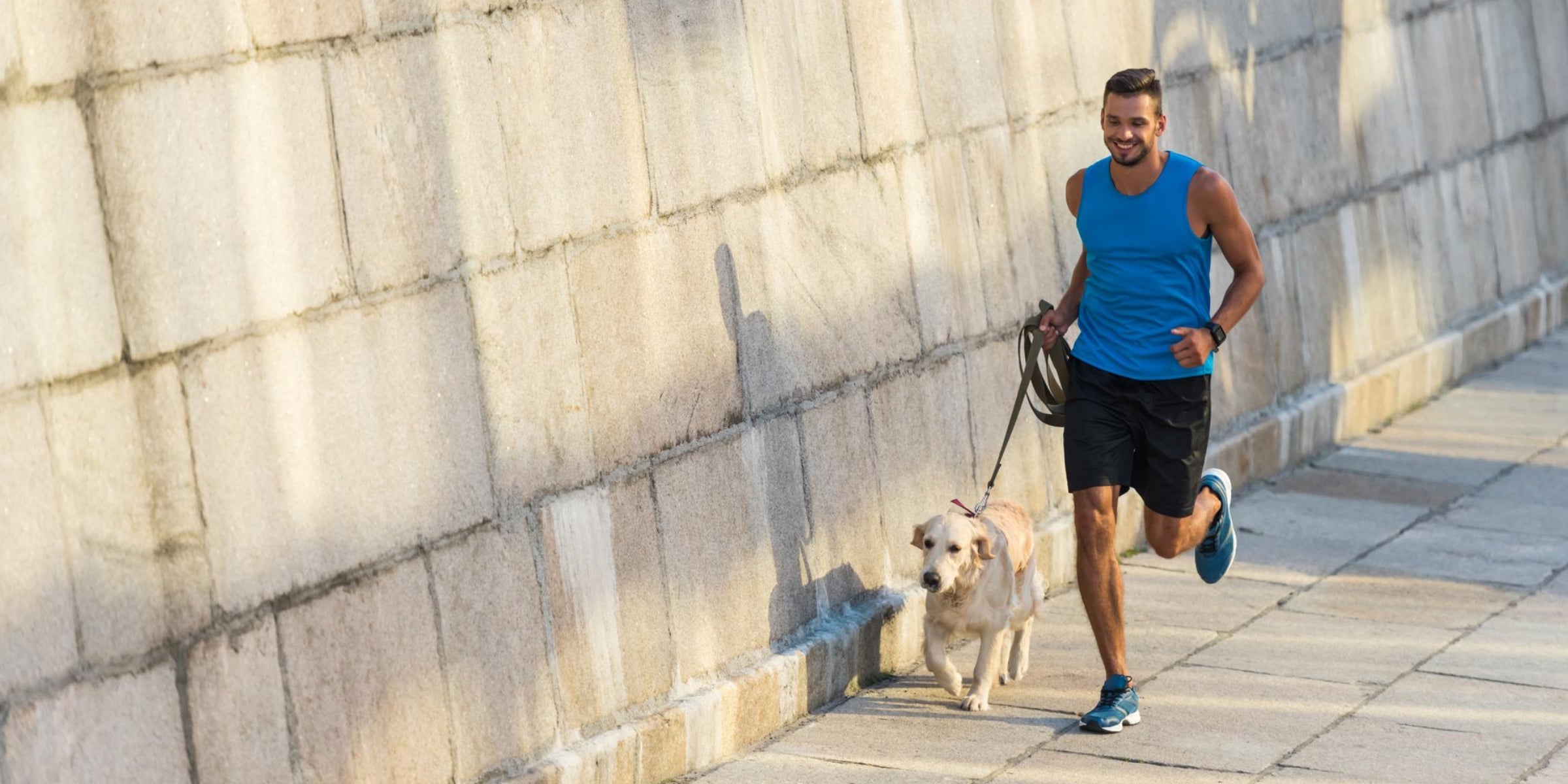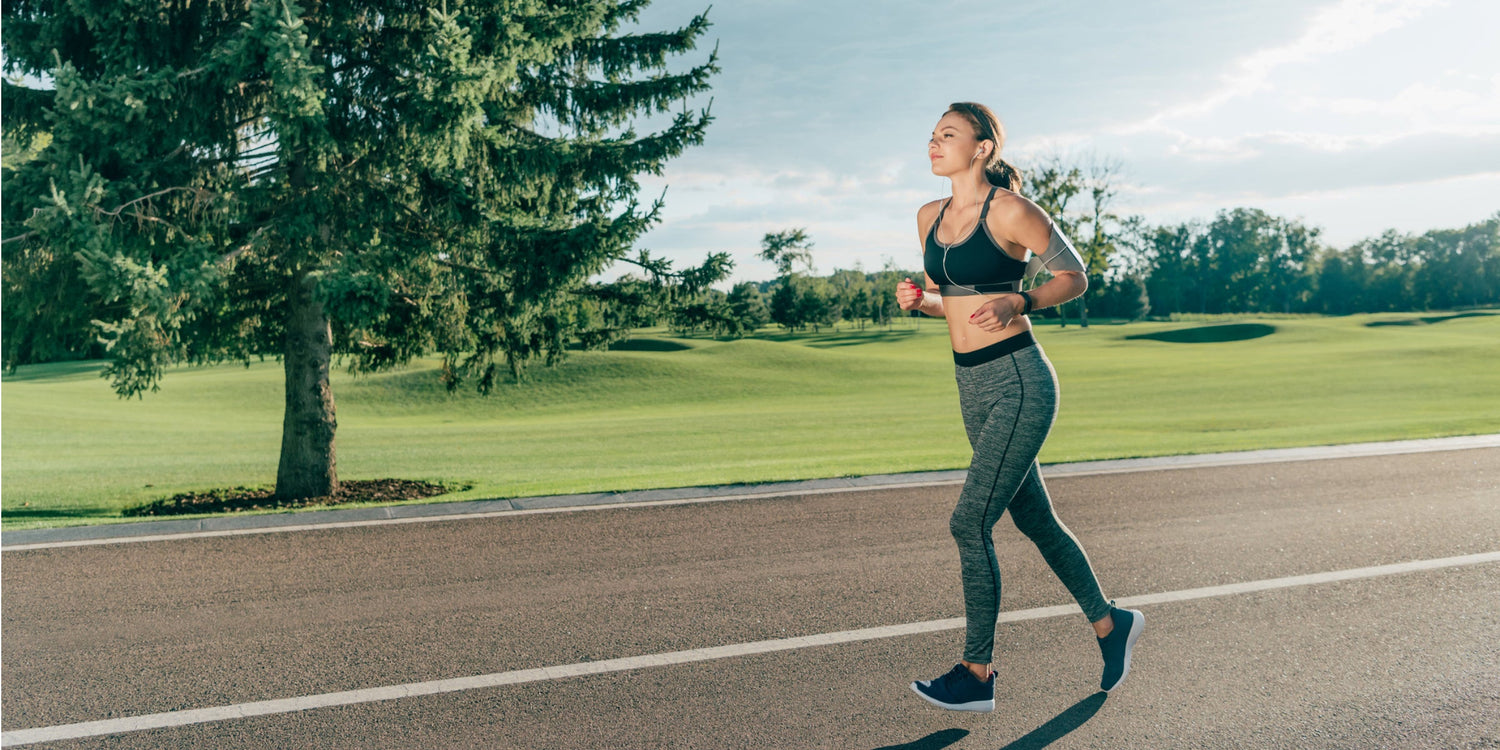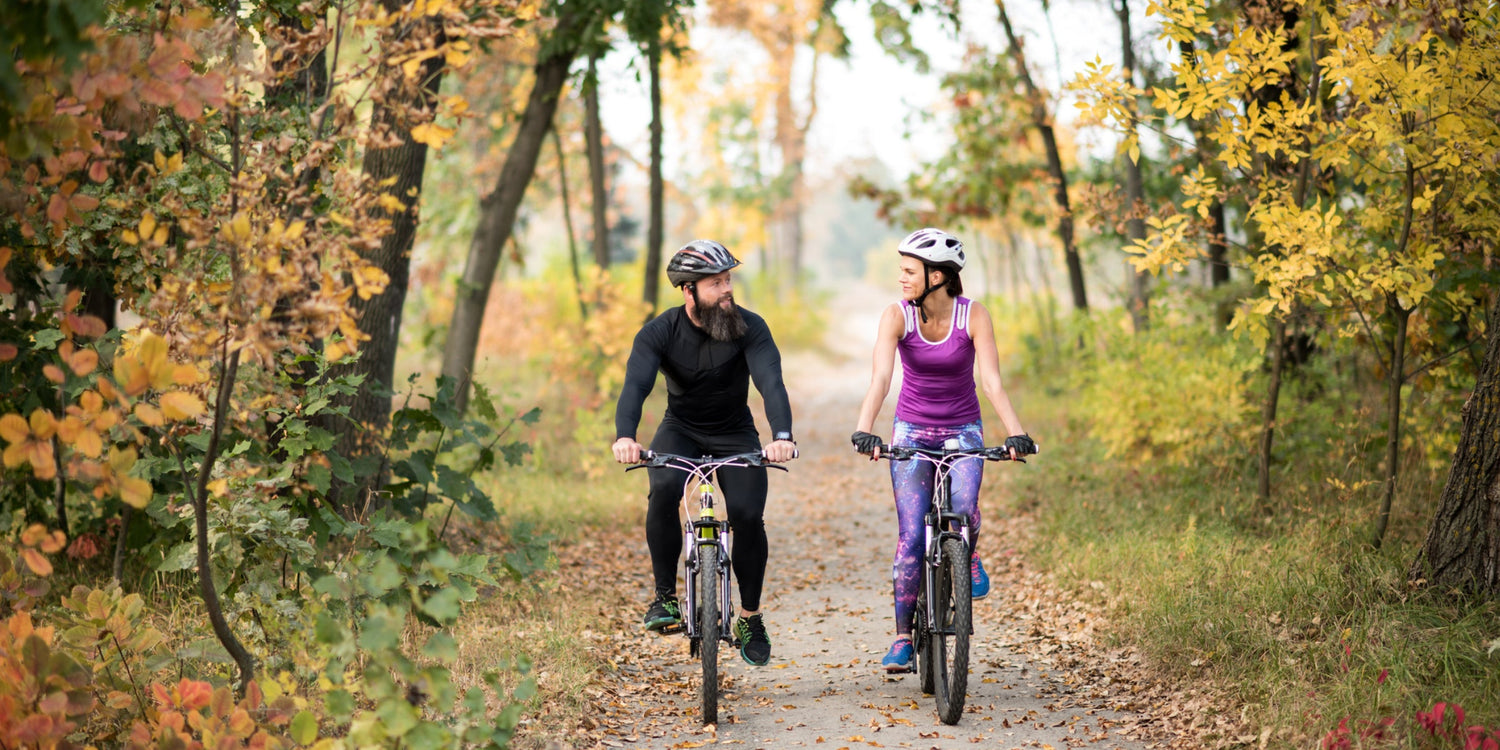Spring heralds a time of renewal and rejuvenation, and what better way to embrace this season of new beginnings than by taking your running routine outdoors? As the chill of winter recedes, giving way to warmer days filled with the promise of summer, runners everywhere can shed their indoor treadmill confines for the open roads and trails. The fresh, crisp air, coupled with the vibrant hues of blooming flora, creates an ideal setting for runners seeking to revitalize their spirits and reinvigorate their bodies. Whether you’re a seasoned marathoner or a casual jogger, spring offers a unique opportunity to enhance your physical fitness while enjoying the natural splendor that comes but once a year. In this article, we’ll delve into some essential tips that will help you make the most of your outdoor runs during this splendid season.
1. Dress in Layers

When it comes to outdoor activities or extreme sports, choosing the right base layer is essential for regulating body temperature and ensuring optimal comfort. The base layer is the first layer of clothing that sits directly on the skin, so it plays a crucial role in keeping the body warm in cold weather and cool in hot conditions.
One of the key factors to consider when selecting a base layer is the material. The most common materials used for base layers are synthetic fabrics such as polyester and nylon, as well as natural fibers like merino wool. Each material has its own advantages and drawbacks, so it's important to consider the specific needs of the activity and environmental conditions.
Synthetic fabrics like polyester are known for their excellent moisture-wicking properties. They efficiently move sweat away from the skin, keeping the body dry and preventing the build-up of moisture. This is especially important during high-intensity activities where perspiration is more likely. Additionally, synthetic fabrics are quick-drying and lightweight, making them an ideal choice for activities that require mobility and agility.
On the other hand, natural fibers like merino wool have unique properties that make them an attractive option for base layers. Merino wool has excellent insulation and temperature-regulating abilities, making it ideal for use in both hot and cold weather conditions. Unlike synthetic materials, merino wool retains its insulating properties even when wet, meaning it still keeps the body warm even if perspiration occurs. It also has natural antimicrobial properties, which help to reduce odors and keep the base layer fresher for longer periods.
However, one must not forget the importance of adding an extra layer during cooler spring weather. An additional layer provides insulation that acts as a shield against wind, which is often more brisk during the spring season. Wind can exacerbate the already chilly temperatures, making it harder for our bodies to stay warm. The extra layer, whether it is a light jacket, sweater, or even a shawl, can aid in reducing the wind's chilling effect and protect us from discomfort.
Another important consideration is the potential for precipitation during the spring months. Spring showers are not uncommon, and getting caught in the rain without proper protection can lead to dampened clothing and reduced body heat. An extra layer, such as a waterproof or water-resistant jacket, can keep us dry and maintain our body temperature even in wet conditions.
2. Warm Up and Train Properly

Speed workouts are an essential part of any training program for athletes looking to increase their efficiency and strength. These targeted exercises not only help individuals improve their speed but also enhance their overall performance in various sports activities.
One of the primary benefits of incorporating speed workouts into one's training routine is the boost in efficiency. By engaging in these high-intensity exercises, athletes learn to maximize their energy expenditure and minimize wasted effort. Through focused training, individuals develop better muscle coordination and learn to move with precision and effectiveness.
Additionally, speed workouts contribute to the improvement of an athlete's strength. These exercises not only strengthen the muscles directly involved in speed, such as the legs and core, but also develop the supporting muscles necessary for stability and balance. A stronger body allows athletes to generate more power, leading to faster and more explosive movements.
There are numerous speed workout techniques that athletes can incorporate into their training routine. One popular method is interval training, which involves alternating between bursts of high-intensity effort and periods of rest or lower intensity. This type of workout improves cardiovascular endurance and conditioning while pushing the body to its limits.
Another effective method is tempo runs, which involve maintaining a fast, consistent pace for an extended period. By performing these runs, athletes learn to sustain a higher intensity for a longer duration, leading to increased stamina and resilience.
Hill sprints and hill repeats are other speed workout techniques that can enhance speed and strength. Running uphill forces the body to work against gravity, thereby strengthening the muscles involved in speed and providing an intense workout.
No matter the specific speed workout technique chosen, it is crucial to gradually increase the intensity and volume over time. Starting with shorter distances or shorter intervals allows the body to adapt and avoid injury. As athletes progress, they can gradually increase the duration, speed, or intensity of their workouts to continue challenging their bodies.
Implementing speed workouts into one's training regimen is not limited to professional athletes. Individuals of all sports and fitness levels can benefit from these exercises. Whether it is a sprinter looking to improve their race times, a soccer player aiming to increase their agility, or a recreational runner hoping to set a new personal record, speed workouts can take their performance to new heights.
3. Stay Hydrated

Water breaks are of utmost importance when engaging in any physical activity, and running is no exception. As the body perspires, it loses water and electrolytes, leading to dehydration. And while it is common knowledge that dehydration can occur during intense workouts, many runners tend to overlook the significance of maintaining proper hydration during milder weather conditions.
Staying hydrated during runs is vital for many reasons, and it goes beyond preventing a dry mouth or quenching your thirst. Adequate hydration helps to regulate body temperature and maintain overall cardiovascular health. The body's core temperature rises when running, especially under the sun's scorching rays. By replenishing lost fluids, runners ensure that their bodies can effectively release the excess heat, preventing overheating and potential heat-related illnesses.
Furthermore, staying hydrated optimizes performance and helps prevent injuries. When the body is dehydrated, fatigue sets in more quickly, and muscles become more prone to cramping. Replenishing fluids with regular water breaks enables runners to sustain their energy levels and go the extra mile, metaphorically and quite possibly literally.
While it is crucial to stay hydrated throughout the entirety of a run, water breaks are particularly necessary when the mercury starts to rise. Experts recommend drinking water every fifteen to twenty minutes during exercise. That being said, it's important not to rely solely on thirst as an indicator of hydration needs. By the time you feel thirsty, your body has likely already experienced significant fluid loss. Therefore, establishing a routine of taking periodic water breaks ensures that runners stay hydrated proactively rather than reactively.
Choosing the right beverage for hydration is as important as drinking water itself. Water remains an excellent choice, as it is readily available, calorie-free, and supports the body's vital functions. For those engaged in prolonged and strenuous runs, sports drinks that contain electrolytes can also be beneficial. Electrolytes, such as sodium and potassium, are minerals that help maintain fluid balance and aid in muscle function.
4. Protect Yourself from the Sun

Exercising outdoors has numerous benefits, from fresh air to the freedom of movement, making it a preferred choice for many fitness enthusiasts. However, as much as we love to soak up the sun while staying active, it’s crucial to prioritize sun protection to prevent any potential harm. When it comes to running outside, shielding yourself from the sun is essential to avoid sunburns, sun damage, and even the risk of skin cancer. Here are some tips to protect yourself from the sun before heading out for a run.
Firstly, it is important to understand the significance of sunscreen. Apply a broad-spectrum sunscreen with an SPF (Sun Protection Factor) of 30 or higher at least 30 minutes before you start your run. Make sure to cover every exposed area of your skin, including the face, neck, and ears. Consider using a sweat-resistant sunscreen to ensure it doesn't easily wash off with your perspiration during your workout.
Secondly, don't underestimate the merits of appropriate clothing. Opt for lightweight, breathable fabrics that provide coverage, such as long-sleeved shirts and full-length pants or leggings. It may seem counterintuitive to cover up when it's hot outside, but these clothing choices help protect you from harmful UV rays. Additionally, wearing a wide-brimmed hat or a cap with a visor can shield your face, scalp, and eyes from direct sunlight.
Furthermore, timing your run strategically can also make a significant difference. Try to avoid running during the peak sun hours, usually between 10 a.m. and 4 p.m., when the sun's rays are the strongest. Instead, schedule your run in the early morning or late afternoon when the sun isn't as intense. Not only will this minimize sun exposure, but it can also help you avoid extreme heat, ensuring a more pleasant and comfortable running experience.
Lastly, don't forget to protect your eyes with a pair of high-quality sunglasses. Look for sunglasses labeled as blocking 100% of UV rays, ensuring they provide adequate protection. Shielding your eyes helps prevent damage caused by UV radiation and reduces the risk of developing conditions like cataracts later in life.
5. Explore New Routes

Many runners find themselves stuck in a rut, running the same routes day after day. While consistency is essential for improving endurance and performance, exploring new routes can provide a refreshing change of scenery and add excitement to your running routine.
One of the benefits of trying new running routes is the element of surprise. Running along unfamiliar paths keeps you on your toes, both physically and mentally. When you're used to the same routes, your body becomes accustomed to the terrain, making it easier to fall into a comfortable pace. By exploring new routes, your body encounters different surfaces and inclines, challenging your muscles in new ways and helping you become a stronger, more well-rounded runner.
Another advantage of exploring new routes is the opportunity to discover hidden gems in your neighborhood or city. Running often allows you to access areas that you might not otherwise explore. You may stumble upon a beautiful park, a scenic trail, or even new shops and cafes that can become your go-to spots for post-run recovery. Running can become an adventure rather than just a workout, as you seek out new places to explore and enjoy.
Exploring new routes also helps prevent boredom, a common issue that can arise when you repeatedly run the same paths. A monotonous routine can lead to a lack of enthusiasm and motivation, affecting your overall running experience. By introducing novelty through different routes, you break free from the mundane and add an element of excitement to your workouts. Each run becomes a new adventure, eliminating the risk of burnout and keeping you engaged in your fitness journey.
Furthermore, diverse running routes can offer a change in terrain and scenery, which can be a refreshing change for both your body and mind. Running on off-road paths and trails can stimulate coordination and balance, activating different muscles while reducing the impact on joints. Additionally, the beauty of nature can have a positive impact on your mental well-being, reducing stress and enhancing your overall mood during and after your run.
When exploring new routes, it's important to prioritize safety. Familiarize yourself with the area, ensure it's well-lit and populated. Carry your phone, let someone know your route, and be aware of your surroundings. Consider running with a buddy or joining a local running group for added security and support.
6. Cool Down and Stretch

After completing a vigorous run, many people are tempted to simply stop and relax, but what they may not realize is that a proper cool down and stretching routine is just as important as the run itself. Cool down exercises and stretching are vital for preventing injuries, promoting muscle recovery, and improving flexibility.
Cooling down after a run involves gradually reducing the intensity of the workout before finally stopping. It allows the body to slowly return to its pre-exercise state, preventing dizziness or lightheadedness that can occur when abruptly stopping high-intensity activities. This gradual decrease in intensity also aids in preventing blood pooling in the legs and helps lower heart rate and breathing rates to normal levels.
In addition to a cool down, stretching is an essential part of any post-run routine. Stretching not only helps to lengthen the muscles that have been shortened during the workout but also aids in maintaining and improving flexibility. After running, muscles can become tight and stiff, and stretching them helps to alleviate this tension. Regular stretching can also enhance athletic performance by improving range of motion, allowing for a greater stride and reducing the risk of injury.
Recovery shouldn't end when you get home. The RENPHO Leg Massager Pro+ is designed to provide an all-rounded leg massage, promoting faster muscle recovery. It features a handheld controller that allows customization to reduce muscle tightness and improve flexibility. Regular use of this massager can decrease leg discomfort, relax muscles, and enhance muscle activity, making it an excellent tool for runners looking to recover quickly and effectively.
@thedaitrickster The RENPHO Shiatsu Foot Messager is a must have after a hard days work 🥰#WomenMatter #TikTokShop #RENPHOrelax #foryou #fypシ ♬ Go for a drive! Refreshing and fast-paced western music synth(1419704) - NANA
On the other hand, the RENPHO Shiatsu Foot Massager Premium offers a deep-kneading massage experience that can rejuvenate tired feet. With adjustable functions and app connectivity, it provides a personalized massage that can improve blood flow, relieve chronic foot discomforts such as plantar fasciitis, and help with neuropathic foot numbness. For runners, this means a soothing end to a day's run, ensuring relaxation and preparation for the next day's challenges.
Both devices cater to the needs of runners, aiding in the cooldown process by targeting key muscle groups affected by running. Incorporating these massagers into post-run routines can lead to better muscle recovery and overall well-being.
Renpho Health Tips
-

Faster and Stronger: 5 Exercises to Improve Your Running
May 14, 2023
Read more >
-

How to Train Your Dog to Be Your Running Buddy
November 28, 2023
Read more >
-

Finding Stillness in Motion: How Running Helps Me Connect with Myself
December 18, 2023
Read more >
-

Connecting with Nature: Exploring the Healing Power of Outdoor Activities
February 11, 2024
Read more >
-

5 Exciting Outdoor Activities to Experience the Beauty of Autumn
October 15, 2023
Read more >



































